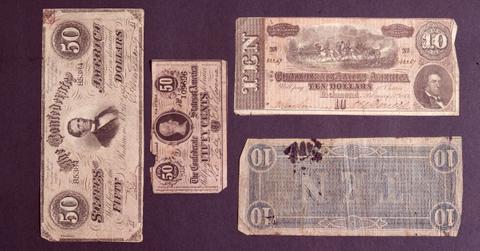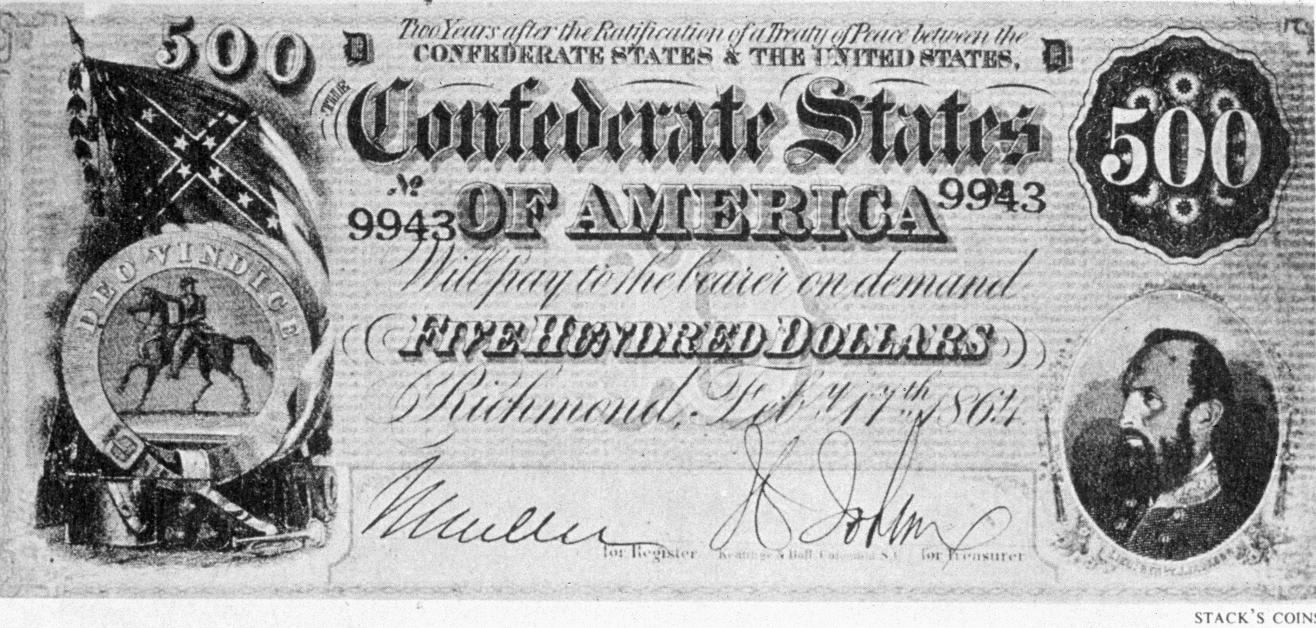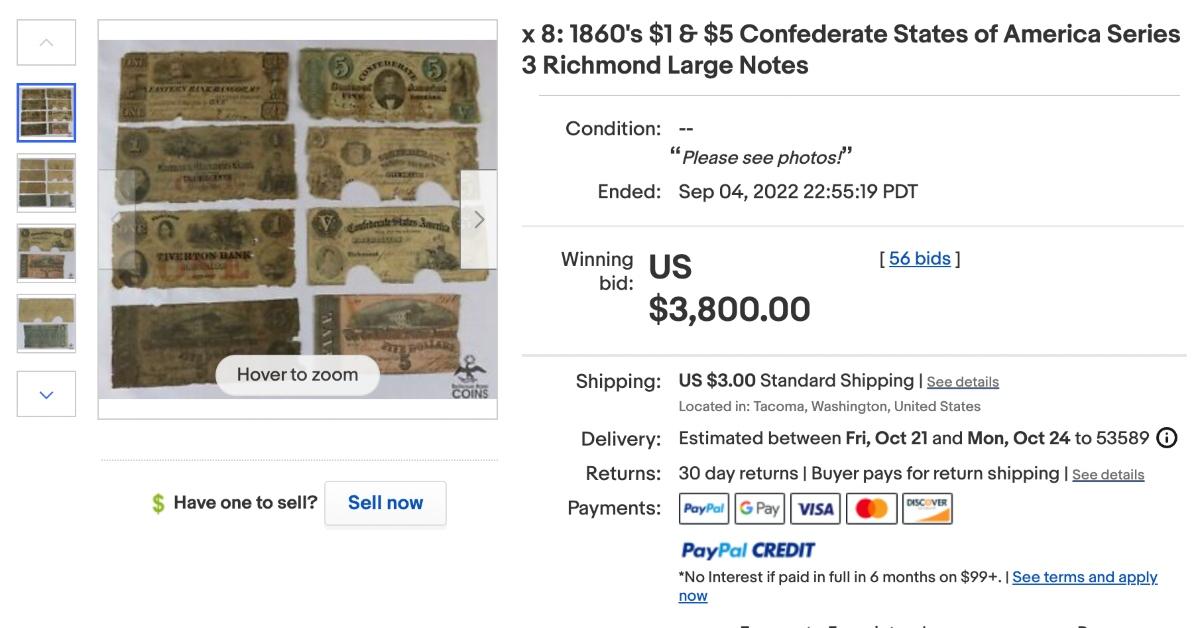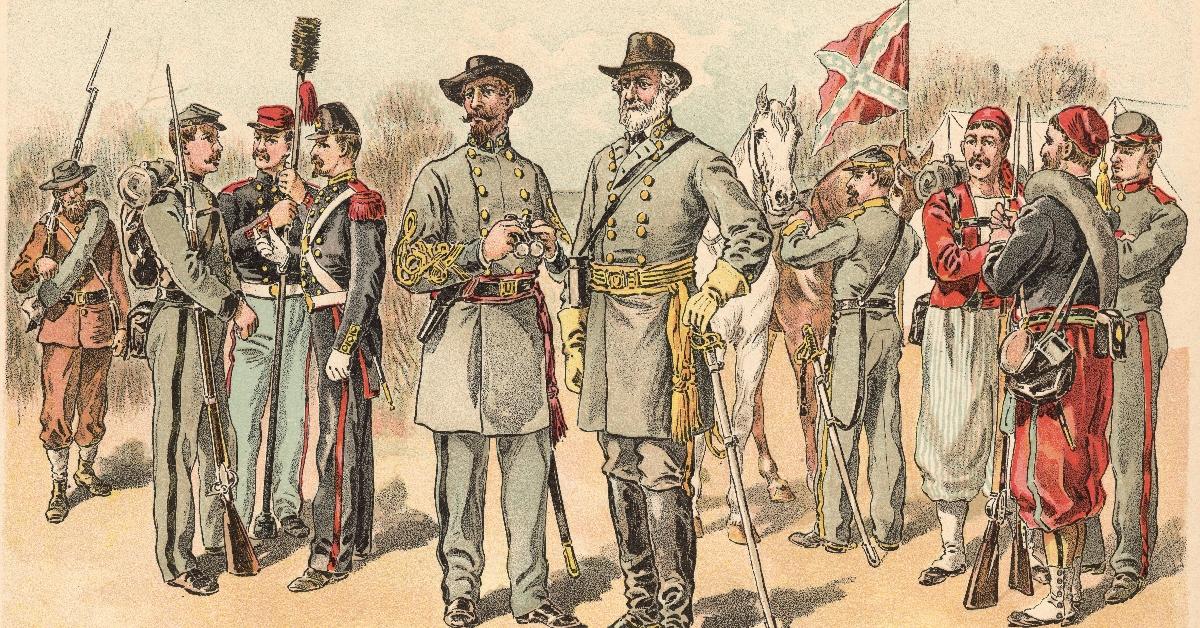Check Your Confederate Money — Graybacks Are Selling for Thousands
Today, you can still find Graybacks floating around on eBay and at other auctions. Is Confederate money worth anything? Here's what we know.
Oct. 18 2022, Published 12:34 p.m. ET

During the Civil War, the Confederacy of 11 states that wanted to secede from the U.S. printed their own money. Confederate money, known as “Graybacks,” were more like promissory notes that promised payouts if the Confederates won the war. That obviously didn’t happen, and after the war, the Graybacks weren’t worth the paper they were printed on.
Today, there are still Graybacks floating around on eBay and at other auctions. But are they worth anything? Keep reading to find out!

Is Confederate money worth anything today?
Confederate money is actually worth more now worth than it ever was back in the late 1800s. The money is especially valuable for collectors of Civil War memorabilia.
According to the collector's website, CoinSite, a Confederate $1,000 note printed in May 1861, can bring anywhere from $3,500 to $35,000 at auction, depending on the condition. The $1,000 bill was the highest denomination issued by the Confederate government on only 607 were printed, CoinSite reports.
Right now, there are over 6,000 auctions for Confederate currency on eBay. The highest priced Grayback on eBay is a $5 1861 Confederate States of America (CSA) note depicting an Indian Princess selling for $31,500.

Of the CSA notes recently sold on eBay, a collection of eight $1 and $5 notes, which look pretty well worn, sold for $3,800 after receiving 56 bids.
Graybacks helped the Confederates finance the Civil War.
The Confederates started printing their own money in 1861 before the Civil War began to help them finance the war. The majority of the currency wasn't secured or backed by any assets. Instead, the notes promised the holder would get the bill amount if the Confederates won the war.
The CSA notes were called “Graybacks” due to the gray uniforms worn by Confederate soldiers, writes Colorado State University professor Robert Gudmestad in a 2021 article. The notes depicted images of gods and goddesses, enslaved people, and politicians from the South like Andrew Jackson, John C. Calhoun, George Washington, and Jefferson Davis.

Confederate currency was issued in values from 10-cents to $1,000. Early Confederate currency said on the bills that the holder would be paid “six months after the ratification of a treaty of peace between the Confederate States and the United States.” As the war continued for four years, currency printed in later years of the war pushed the payout dates to two years after a peace treaty between the two sides.
The Graybacks were widely accepted as currency throughout the South at the beginning of the war. However, as the war continued and things didn’t look good for the Confederacy, the CSA printed more money, which depreciated the face values of the notes in existence.
Counterfeiting Confederate currency by the North and others worsened the problem and caused significant inflation in the South. At the end of the war, after the Confederates lost and the CSA disbanded, the Graybacks lost all value. Some Southern families, who depended on the Confederate currency, lost everything.
If you have any Confederate money, it could be valuable depending on it's condition and other factors. Be sure to check with a reputable collector to make sure you get an accurate quote for its value.
